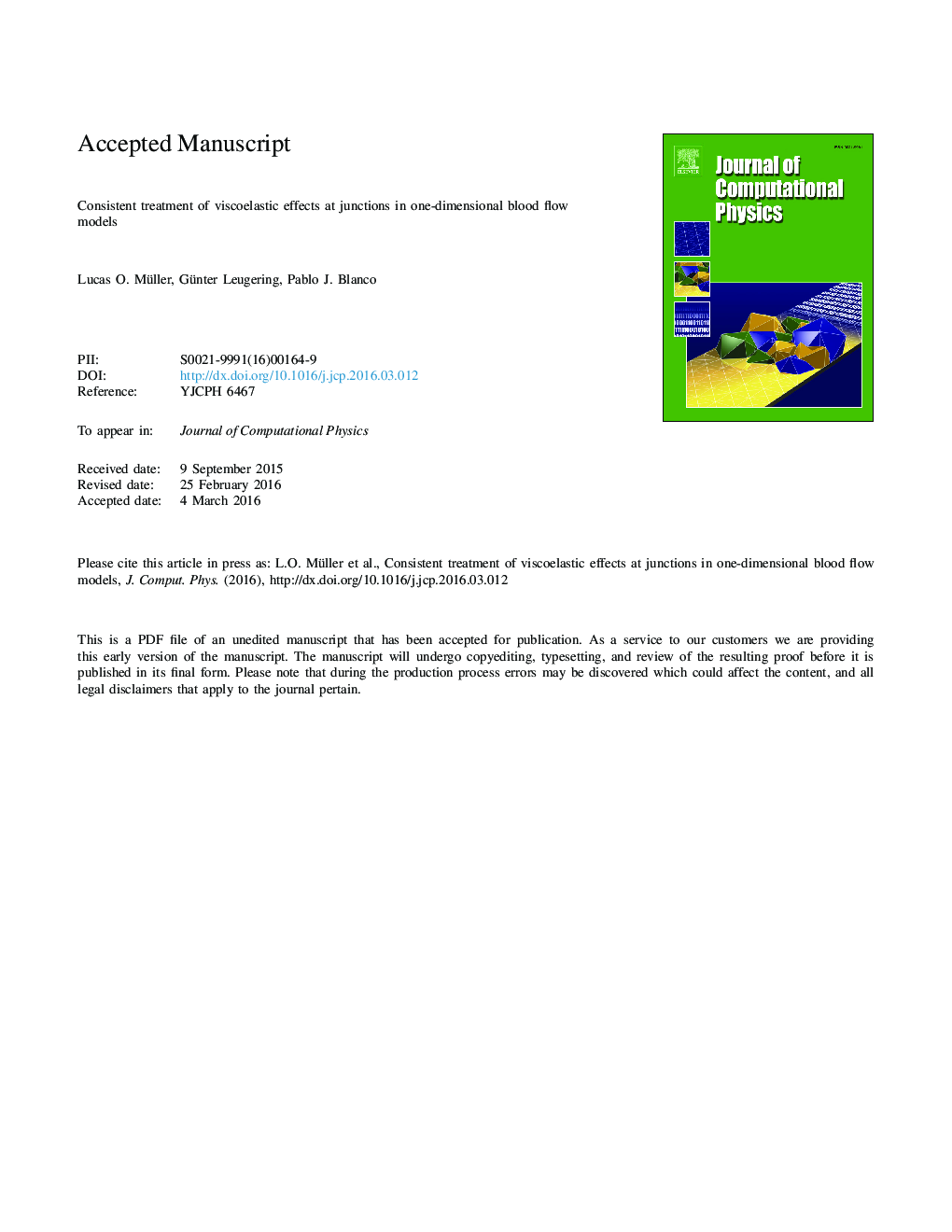| Article ID | Journal | Published Year | Pages | File Type |
|---|---|---|---|---|
| 6930299 | Journal of Computational Physics | 2016 | 38 Pages |
Abstract
While the numerical discretization of one-dimensional blood flow models for vessels with viscoelastic wall properties is widely established, there is still no clear approach on how to couple one-dimensional segments that compose a network of viscoelastic vessels. In particular for Voigt-type viscoelastic models, assumptions with regard to boundary conditions have to be made, which normally result in neglecting the viscoelastic effect at the edge of vessels. Here we propose a coupling strategy that takes advantage of a hyperbolic reformulation of the original model and the inherent information of the resulting system. We show that applying proper coupling conditions is fundamental for preserving the physical coherence and numerical accuracy of the solution in both academic and physiologically relevant cases.
Related Topics
Physical Sciences and Engineering
Computer Science
Computer Science Applications
Authors
Lucas O. Müller, Günter Leugering, Pablo J. Blanco,
